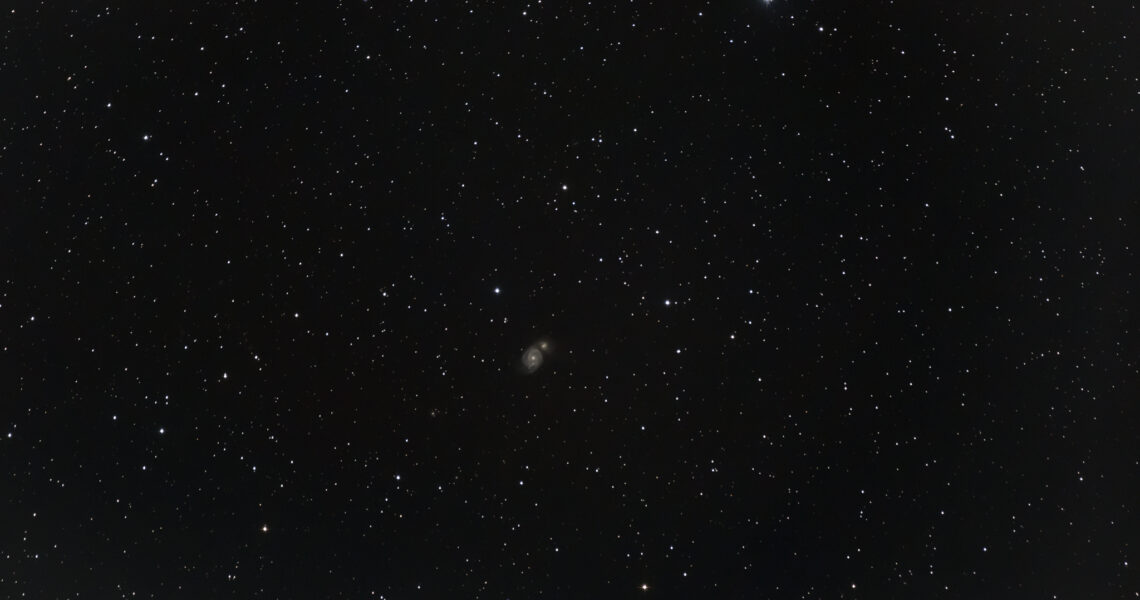
The Whirlpool Galaxy
18 July 2023Another target that I wasn’t sure if I’d be able to capture. The Whirlpool (M51) is pretty small and not very bright and it’s actually two spiral galaxies that ‘interact’ between 23 and 31 million light years away. The smaller galaxy is actually NGC5195.
I’ve seen some fabulous images of this object and whilst they were captured with much more kit and magnification than I have, I planned to see what I could get.
M51 is located near the ‘handle’ of the Big Dipper (one the best-known and most recognisable constellations in the sky). It’s not visible with the naked eye, but I was just about able to make it out by taking a few test photos in the general area.

On the first shoot, I decided to try out a very old but serviceable 2x converter on my 70-200mm lens, to double up my focal length. The test images on the camera screen looked pretty good, so once I’d tweaked the settings etc, I captured around 200 shots at 30secs. I thought the images seemed OK, but clearly they were either not sharp enough or there were slight trails as DSS would only stack a few of them. I had a go at processing, but there really wasn’t enough data to get anything meaningful.
I tried again a couple of nights later, but chickened out of using the 2x converter! So back to focal length of 200mm, which gave good results with just shy of 400 frames at 20secs (keeping on the the safe side). This time DSS liked the frames and stacked most of them.
So here it is, still small in the frame, not really much colour to bring out, but it might be a target I’ll shoot with the same settings one night to combine with this data.

So another future challenge is to try this (or another target) with the 2x converter to see if it’s worth persevering. In retrospect, 30second exposures were probably a bit too long at 400mm using my setup, so maybe 15 to 20secs would be better.
But I think next for me is that good old favourite Andromeda Galaxy (M31), which now rises in the North East and climbs high in the Easter sky. About 135mm would work well and I’d like to get loads of data to se if I can improve on my efforts last year. Watch this space!
